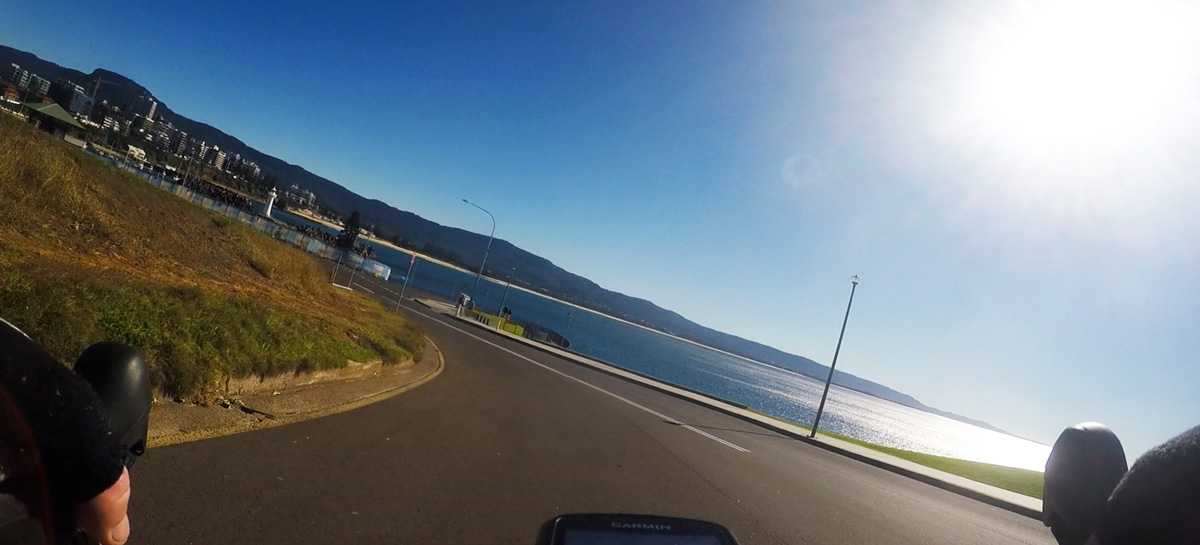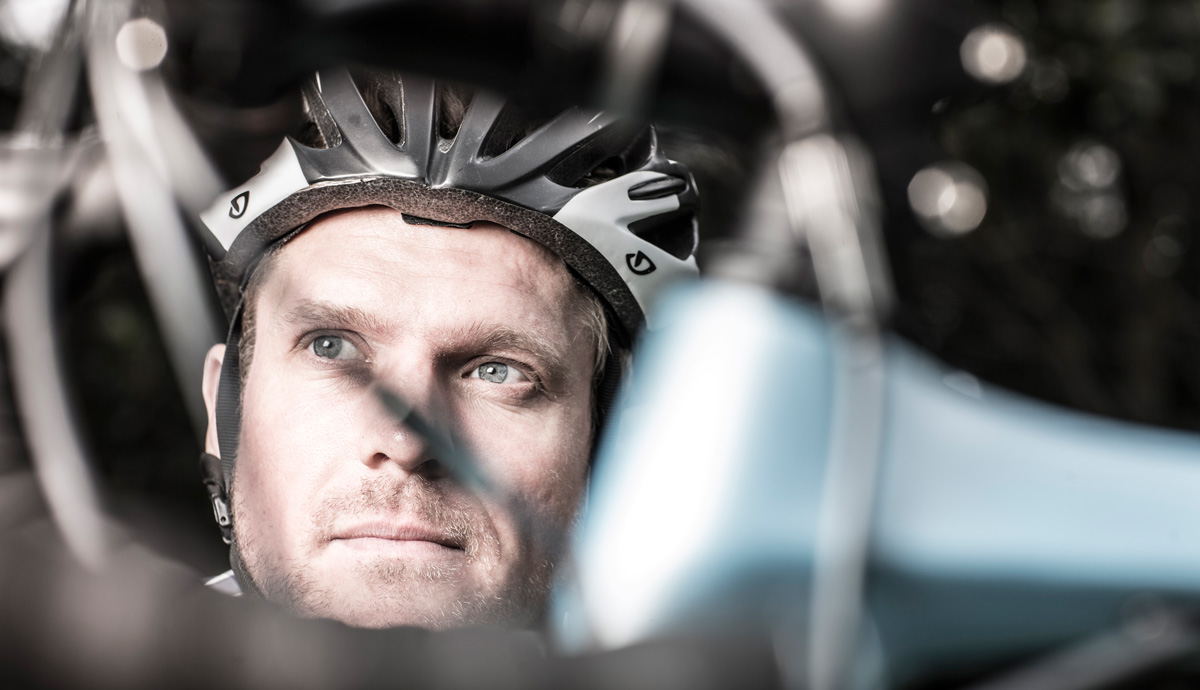September 9, 2015
On Your Bike: Understanding the Culture of Cycling
Riding in the slipstream of cycling’s subculture to better understand what makes the two-wheeled tribe tick.
In recent years Australian cities, particularly those along scenic coastal stretches, have witnessed an explosion of strange fauna known as MAMILs - middle-aged men in lycra riding bikes.
Dig a little deeper and the Australian interest in cycling goes beyond the middle-manager conscious of his middle regions to include people across genders and ages.
From Copenhagen in Denmark, home of the “Cycle Chic” movement, to the US metropolis of Chicago, the bike is fast becoming the key to unlocking urban congestion and at the same time becoming part of the city fabric.
 'Green Light Go' -The Birth of Cycle Chic.
'Green Light Go' -The Birth of Cycle Chic.
Colville-Andersen's spontaneous shot has been called 'the photo that launched a million bicycles'.
Photo: Colville-Andersen, via Flickr. Published under Creative Commons license.
Why do people cycle? What inspires them to spend eye-watering amounts of money on a bike that doesn’t even have a motor?
And why does discussion of cyclists' place as road users, including simple safety campaigns to make it mandatory for motorists to give cyclists a minimum of one metre space when passing, stir such passion and heated debate?
PhD student Lance Barrie, from UOW’s Australian Centre for Cultural Environmental Research (AUSCCER) is embarking on an urban and cultural geography research project to answer those questions.
His work is aimed at understanding the user experience, which will hopefully lead to better decisions around infrastructure planning and changing the attitudes toward the humble bike and its rider.
“Compared to running and swimming, cycling has a very unique and strong subculture,” Lance says. “From the way people dress, to the language they use and the bikes they ride.
“I found this culture so bizarre when I first started cycling. I would see the same groups on the road in the morning and there was a strong sense of camaraderie amongst cyclists on the ride. There were also some competitive undertones amongst and within the different groups that I found intriguing.”
It’s about the journey, not the destination
Lance says he wants to understand cycling as an experience rather than simply a mode of transport. Using various research methods, cyclists in the Illawarra region will voluntarily map their favourite and most-used routes.
It’s a process that could be likened to understanding ancient tribal migration routes.
“It’s not about where cyclists go but about why they go there. What is their experience in terms of what they enjoy, what they least like and what are most memorable parts of their rides. Why do they choose those routes - is it a safety factor? Is it an emotional value?
“There’s not a lot in the academic literature about cycling. There’s plenty of research about the infrastructure needs to improve cycling as way to get from point A to point B, but very little delves into the user experience. Cycling isn’t just about going from A to B, it’s more about what happens between A and B."
His work will also dig into the tribal rituals that accompany cycling, from the the obvious coffee habit to the clothing as a marker of identity.

All in the name of research
A second phase of the project requires an approach to research that is a little less traditional for an academic endeavour. Lance will immerse himself in the culture to get a first-person experience of all aspects of the cycling culture: young and old, male and female, and social riders to the training obsessed.
To gather that ‘data’ there’s one small challenge: he needs to be able to keep up with his participants.
“I’ve started a pretty rigorous training program so I can go on much longer rides and keep up with the faster bunches,” Lance says. “This part of the project is about documenting the cyclists’ experience.
“I’ll be videoing rides and asking cyclists to carry video cameras. After the ride I’ll sit down with the participants to watch the edited footage and ask them to reflect on the experience, helping them to communicate the emotional experience and their personal attachment to cycling.”
Critical to the quality of the data will be gathering a broad sample, and Lance is keen to involve participants from different genders and diverse age groups.
“I really want to get a 50/50 gender split among the participants. The female experience is very different to that of men. Despite the lycra, it’s a very masculine sport and often women start cycling with men but as they meet other women they break away to form their own groups. What is it in their experience that causes that split?”
Turning jeers into cheers
From being described as “cockroaches on wheels” by prominent media personalities to the abuse hurled from a window of a passing car, Lance says there’s a theme of divisive and vitriolic language surrounding cycling he hopes his research can contribute to changing.
“There’s a juxtaposition where people say cycling is great for health, good for the environment and so on, but when they talk specifically about their own interaction with cyclists it’s a whole different story,” Lance says.
“Suddenly they are viewed as risk-taking, a nuisance, law-breakers and the list of quite strong language goes on. It would seem there’s a car-centric view where the bike is no longer healthy and sustainable, it’s simply an impediment to the person who is using their car to get from point A to point B.”
And for the conservative mainstream media, the pesky cyclist is the ultimate website click-bait.

“Nothing attracts comment and debate like cycling articles. It’s incredible the passion the subject stirs and that’s on both sides of the debate. Yet, if ever there was a time to put it on the agenda it’s now.
“If you look at Commonwealth Government-supported projects, like the $15 billion WestConnex in Sydney, the focus is all about moving more cars.”
Lance says his research could be used to help rethink cycling promotion in terms of how cyclists are being portrayed in cycling campaign as well as assist in the discourse around cycling policy and urban planning.
“I’d like to see a wide distribution of the results. Getting more people on bikes for fitness or recreation or commuting are great ends but how can we also make it more enjoyable and use that understanding to build better infrastructure.
“I started cycling a few years ago as a way of staying fit so I could keep playing soccer but since then I’ve found myself riding more, training more as well talking more about cycling. It's definitely a ‘passion PhD’ for me.”
- Cyclists from the Illawarra region interested in participating in the study can contact Lance Barrie at lanceb@uow.edu.au.
